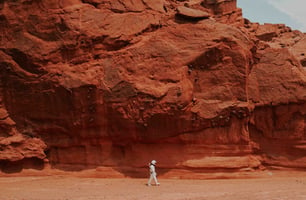At its most basic level, a belt is a looped strip of flexible material used to bind two or more...
History of Bearings
As a kind of mechanical part, bearings are used in all types of machines. You might not be aware of how important they are because their use is often obscured.
At its core, bearings are parts that help the rotation of objects. Within machinery, they support rotating shafts. Automobiles, airplanes and electric generators, and so on are devices that use bearings. They are also used in the machines we use daily, such as refrigerators, vacuum cleaners, and air-conditioners. The rotating shafts of the wheels, gears, and engines in such machines are supported by bearings, supporting them in spinning more smoothly.
Early uses of bearings
Bearings are older than you might think. The invention of the rolling bearing is so old that it might even predate the invention of the wheel. People found it was easier to drag heavy objects across a surface by placing rolling logs under it. Different liquids were also used to provide the bearings with lubrication to make their motion smoother.
An excellent example of the rolling bearing can be seen in the construction of the pyramids, where the Ancient Egyptians used roller bearings to help transfer large bricks of stone. In the tomb of Djehutihotep, ancient drawings picture large stone blocks on sleds with liquid-lubricated runners that function as a simple bearing.
In the Roman Empire, about 40 AD, the first known ball bearing type system was recorded; it consisted of a simple rotating table with balls below, probably to allow people eating at the table to rotate the table to access other foods.
Almost 1500 years later, the next known mention of a ball bearing was Leonardo da Vinci's sketch. An avid scientist and an artist, ball bearings were integrated into the design and blueprint drawings of a helicopter he drew. Galileo would also describe an early type of ball bearing 100 years after Leonardo's concept.
The Industrial Revolution
It would not be until 1792 that a "modern" ball bearing patent was filed - by the Englishman Philip Vaughan in 1791. A British inventor and iron-master, he developed the first ball bearing pattern in Carmarthen in 1794. This design had the ball running in the axle assembly along a groove, and his design may have been instrumental to the success of the entire Industrial Revolution.
Ball bearings were an essential component of the Industrial Revolution, their task being to enable the machinery to work effectively. At the beginning of the industrial era, with the advent of advanced metal forming methods, it was found that steel bearings were much better at their work than wooden or bronze bearings.
Uses of ball bearings today
Improvements in bearings went hand-in-hand with significant developments in the automobile, machine-tool, and military industries during the 20th century. The option of rolling elements has expanded to include tapered rollers, spherical rollers, and many other iterations. Bearings are also now able to bear larger forces and combined (axial and radial) loads.
Today, ball and roller bearings are still essential to many industrial applications, from ultra-high-speed bearings used in dental drills to gearbox and wheel bearings in the automotive industry.



